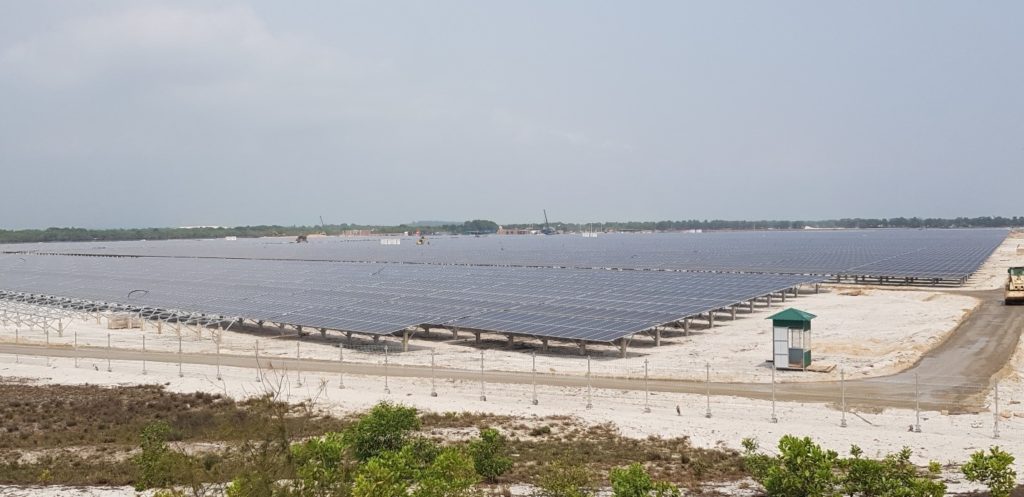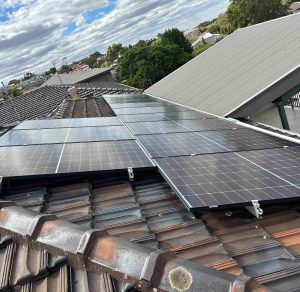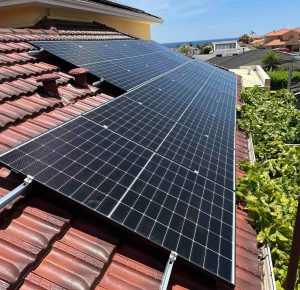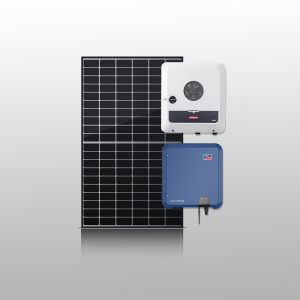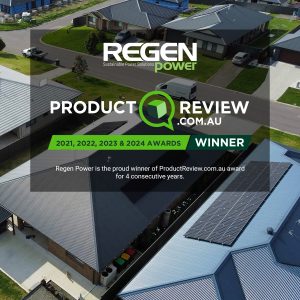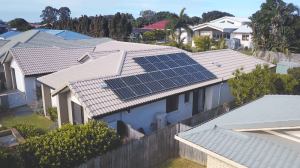Solar farming is a way of generating electricity from solar energy using a large collection of photovoltaic solar panels installed on unimproved land.
Large solar farms usually use hundreds and thousands of solar PVs. The solar arrays come in all shapes and sizes and are usually mounted to the ground.
It absorbs solar energy and convert it into electricity. It is then sent to the power grid for distribution. The local electricity company pays the owner for the generated power.
Solar panel operation in a solar farm is similar to that of a rooftop solar panel generation. The only difference is that in a solar farm a large tract of land is used for generating electricity. Solar farm produces more electricity and it is sold at a profit. These farms are also known as solar parks or photovoltaic power stations.
Solar panels are typically mounted on rotating towers. It can manoeuvre the tilt and angle of each panel so as to make the most of the available solar radiation.
As vast expanses of unimproved land are utilized for solar farms, there is no architectural, spatial or aesthetic constraints as in a rooftop solar installation.
As all the panels are concentrated in one location, maintenance and repairs are much easier and more economical.
Solar farm makes use of idle farmland. It doesn’t harm the ecosystem while making clean and efficient energy.
As of July 2020, the largest solar farm in the world is Bhadla Solar Park spanning over 14,000acres. It is in Rajasthan, the desert region of India. It has a generating capacity of 2.2 gigawatts.
How a solar farm works?
- Solar panels capture solar energy.
- Inverters converts solar power to mains electricity.
- Central unit converts electricity for grid, house safe protection and collects data.
- Solar electricity is fed into the grid and is ready for use.
- Solar farm is controlled and monitored online.
Based on its size there are two types of Solar Farms – Utility-scale and Community solar
Utility-scale solar farms sell directly to utilities, while community solar farms sell directly to end-consumers of electricity, such as homeowners and renters. The main difference between the two is their customers.
Utility-scale solar farms
Utility-scale solar farms refer to those massive areas of land owned by a utility where a large number of solar panels are installed.
These solar panels generate an electric current and distribute that power on high-voltage power lines. The electricity travels along those power lines to the electricity grid.
The power produced at these farms is either sold to wholesale utility buyers through a power purchase agreement (PPA) or owned directly by an electric utility company.
In a utility-scale solar farm the original customer is a utility. After buying the generated electricity from the solar farm, they distribute it to residential, commercial, and industrial customers connected to the grid.
Electricity made by utility-scale solar farms can travel a long way to reach its destination.
Utility-scale solar farms will typically be at least 1 megawatt. It can cater power supply to a minimum of 200 households. Utility-scale solar farms can have a capacity anywhere between 1 MW to 2,000 MW.
Oberon Solar Power Facility is a 180megawatt (MW) utility-scale solar farm, which officially went online in June 2020. It will annually supply enough solar energy to power 30,000 homes.
Community solar farms
Community solar farms are more recent developments aimed at solar powering those who cannot afford to put solar panels on their own roof.
It is a small-scale solar facility that are typically under 5 MW in size. There are even community solar farms that are under 100KW.
It provides electricity for a local community of homes and businesses. The power is shared among everyone who participates in the program.
A community solar farm is also known as solar garden or roofless solar. It is much smaller in size compared to utility scale solar farms. It could be done in a few acres and could even function in someone’s backyard.
The electricity generated by a community solar farm is shared by more than one household. Customers have many options
- Can own a portion of the overall array.
- Lease energy from the solar system.
- Purchase a share of a solar garden
- Replace their monthly utility payments with monthly community solar payments.
The monthly community solar payments are much lower than monthly utility payments. The electricity produced by the community solar farm is used to power the homes within a close range.
Virtual net metering (VNM) is a bill crediting system for community solar. Based on one’s energy consumption, the retail energy company will credit your bill from the power generated by the community solar farm.
The amount of virtual net metering credits one receives depends on the size of their share in the community solar system.
Community solar projects are becoming more and more common. This makes the contract terms more consumer-friendly which in turn attracts more people.
Building a solar farm
The cost of building a solar farm depends on many factors like location, available sunlight hours, top commercial provider etc.
An average cost per watt for solar installations at utility scale is between $0.82 to $1.36 per watt. It is cheaper than a residential solar system.
Solar farms take advantage of economies of scale. As they place large orders for solar panels and other equipment, project developers can purchase equipment for less. That account for the reduced cost per watt for a solar farm.
A 1 MW solar farm would cost roughly $1 million to install. It would need almost 6–8 acres. A smaller solar farm may only require a few acres of land whereas a large utility-scale solar farm can require hundreds of acres.
The land should have a proximity to power lines and electrical panels. This would ensure a smooth connection of the solar arrays to the power grid or to a centralized power source.
It is very essential that the land has an easy access to water resources. To maintain the efficiency of solar panels they will have to cleaned more often for which water is essential.
Depending on the size of the solar project and the number of people working on it, construction on a solar farm can be completed in a matter of months.
One need to work on the solar panel production ratio for the area to understand how much energy a certain solar panel wattage will provide.
Based on the required kilowatt hours of energy one can decide on the number of panels needed for the farm.
Siting and permitting is a bit complicated. It can take 3–5 years to get all the necessary approvals and contracts completed for a solar farm.
Once a solar farm is complete and online, it needs little maintenance.
An average of $40,000 per year can be earned from a 1 MW solar farm by selling the electricity. Landowners who rent out their land for a solar farm can earn between $250 and $3,000 per acre a year.
Solar farms help to reduce the carbon footprint. In future, it will play a vital role in providing clean, economical and efficient renewable energy solution.

